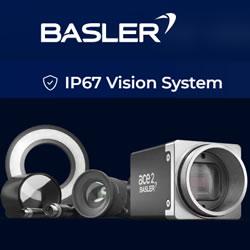2020 Guide to Deploy Fully Autonomous Drones for Inventory Management
Going into the new year and decade, it is noticeable that Industry 4.0, Industrial Internet-of-Things (‘IIoT’) and similar phrases have rapidly entered common parlance, even in the supply chain industry. Underneath these concepts lie the actual technologies that promise to make things automatic, safe, cost-effective, highly scalable, real-time, mass customizable and so on.
California, USA, January 10, 2020 - Going into the new year and decade, it is noticeable that Industry 4.0, Industrial Internet-of-Things ('IIoT') and similar phrases have rapidly entered common parlance, even in the supply chain industry. Underneath these concepts lie the actual technologies that promise to make things automatic, safe, cost-effective, highly scalable, real-time, mass customizable and so on.
Enterprises in the logistics and supply chain sector are rapidly adopting automation technologies such as:
â— Automated ground vehicles (AGVs) that bring goods to warehouse associates in fulfillment centers, and thus enable same-day delivery of online purchases,
â— Computer vision systems that help identify defects in manufacturing parts, in real-time, to address quality issues proactively, and
â— Unmanned aerial vehicles (UAVs i.e. drones) that deliver goods, monitor logistics facilities, scan inventory and much more.
Last-mile package delivery has grabbed most of the media and public attention when it comes to supply chain drones. The appeal of getting your pizza delivered via an autonomous drone, within minutes at your doorstep/rooftop, is undeniable. While we rarely see drones flying around dense urban areas (homes, offices, airports) - fleets are indeed being deployed in remote/rural areas where privacy and security risks are minimal.
The good news is that UAV regulators are slowly, but surely, enabling drones to fly over crowds, at night and beyond the visual line of sight (BVLOS). This will benefit the logistics sector immensely, by being able to substitute fully autonomous drones for manually-operated vehicles. This encouraging progress in regulation is being matched by advances in drone hardware (eg. battery life, reliability, stability) and intelligent automation software (eg. navigation, perception, recognition).
While large scale, outdoor drone fleets may yet be a few years away, there has emerged a highly compelling business opportunity for drones in logistics - that of indoor use of fully autonomous drones, zigging and zagging around large warehouses, distribution centers, air cargo facilities, and third-party logistics sites. Given the enclosed nature of such airspace, most countries do not regulate it - the focus thus shifts to speed and accuracy of automatic barcode scans and the resulting business value. Via proof-of-concept and pilot deployments, enterprises have explored inventory use-cases such as pallet counts, audits, item searches, etc.
The 2020 guide to supply chain drones offers insights into this emerging trend. With a focus on inventory use-cases, it explains how various stakeholders (from warehouse GMs and continuous improvement managers to CFOs and VPs of operations) can realize business value from drone adoption.
Download the 2020 guide for free! https://flytware.com/wp-content/2020%20Guide%20to%20Inventory%20Counts%20using%20Drones.pdf
Early adopters of drones at 3PL sites, DCs, and air cargo facilities seem to have consistent feedback on aerial inventory scans - a) the importance of fully (not partly) autonomous drone solutions for large-scale adoption of drones for inventory, b) the cost-effectiveness, frequency, and reliability of aerially collected data and c) applicability of UAV to multiple use-cases such as surveillance, security, inspection, and delivery.
Nitin Gupta, CEO, FlytBase, emphasized this: "Our deployments of FlytWare at multiple large logistics facilities in the US & Europe have both confirmed the significant business potential for aerial inventory counts and also brought to light the technical and operational challenges that need to be overcome in order to mature PoCs and pilots to true production deployments. Full indoor autonomy, precision landing, VNA navigation, and autonomous charging are crucial for deploying drones in warehousing - but you also need world-class UI/UX, auditable inventory data, seamless WMS integration, and rapid scalability to persuade inventory stakeholders to adopt drones in production."
To learn more about FlytWare for autonomous aerial inventory counts, visit https://www.flytware.com or write to flytware@flytbase.com.
Featured Product

